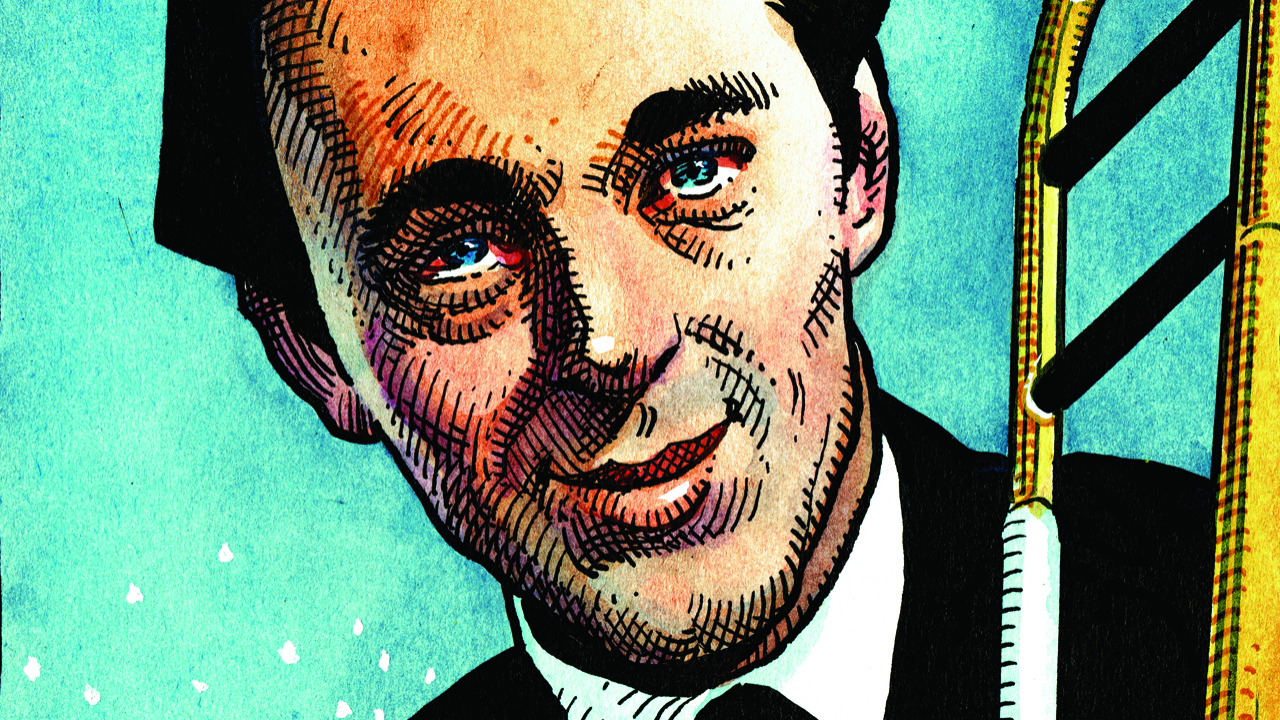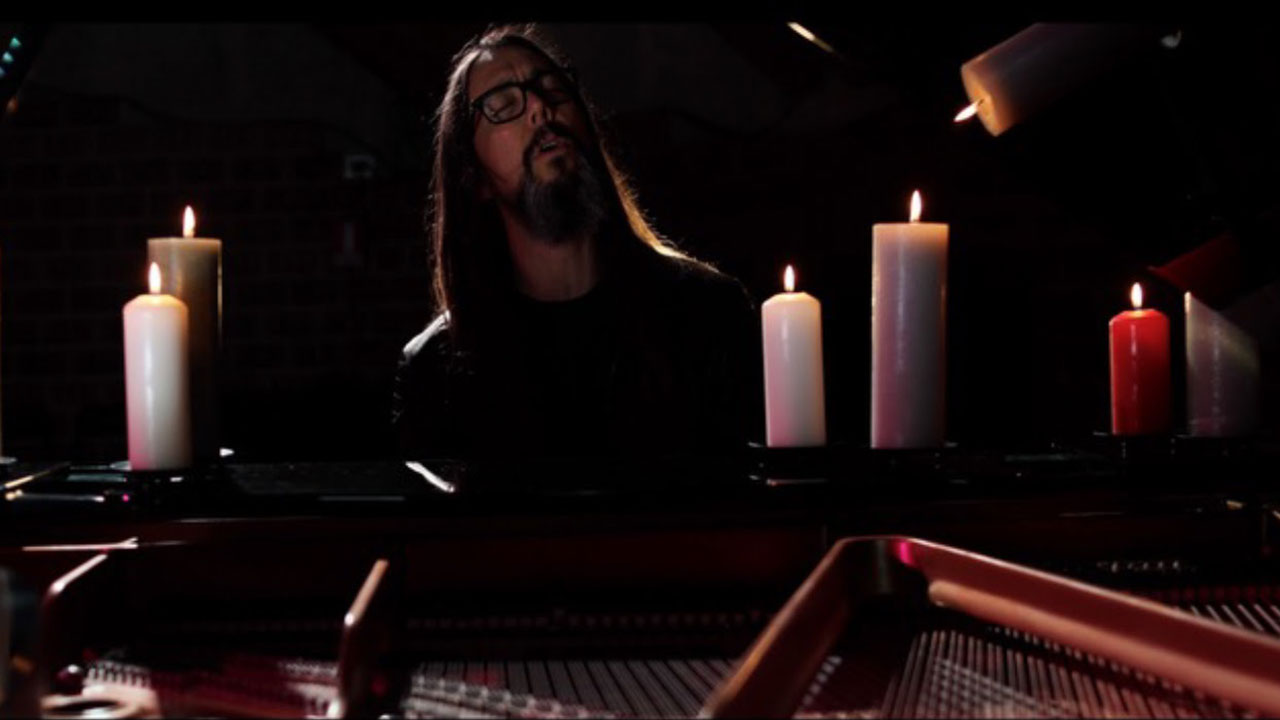Legends Of The British Blues: Chris Barber
In the first part of a new series, where US artist William Stout paints a portrait of the most influential British blues artists ever. First up: Chris Barber...

It was British musicians who took America’s own home-grown music and served it right back to us, initially without our knowledge, as America has a short cultural memory. Blues and jazz musicians who walk the streets unknown in their own country are household names in Europe, where they are treated like gods. Blues great Buddy Guy observed: “Somebody else has got to come from another country to tell you what you got?”
Most white blues fans of my generation first encountered the blues in the form of cover versions of American blues classics (mostly from songs written by the great Willie Dixon during his employment at Chess Records), presented to us during the first musical British Invasion by groups such as The Rolling Stones, Manfred Mann, The Animals, The Yardbirds and Them.
I was met with great scepticism from some of my fellow music-obsessive pals when I told them the book that would follow my _Legends Of The Blues _would be Legends Of The British Blues, and that it would also contain 100 blues musicians. “Fifty entries, maybe – but 100? Impossible! There just aren’t that many British blues players and singers out there of significant note.”
Listing 50, indeed, turned out to be easy. The list of 100 Brit bluesers took me longer than expected to compile, but once my research began in earnest, the list was not only completed, but it was exceeded – I actually had to cut nearly 20 musicians from the book. Ouch! Cutting them hurt. I made a set of different rules for inclusion in this book from my prior volume.
1) Except for South African transplant Manfred Mann, all of the singers and musicians in this book were born in England, Ireland, Scotland or Wales.
2) I am not necessarily a fan of every single musician featured in this book. Having said that, my recommended songs are those that I personally do like.
3) Each chosen entry has made what I consider to be a significant contribution to the unruly body of music known as the British blues.
Sign up below to get the latest from Classic Rock, plus exclusive special offers, direct to your inbox!
4) I felt free to include practitioners of the subset genre known as blues-rock.
During my research I was delighted to discover important British blues practitioners prior to, and contemporary with, the acknowledged big four godfathers of the British blues: Alexis Korner, Cyril Davies, Long John Baldry and John Mayall. Following my research, I revised my ‘Godfathers of the British Blues’ list to also include Davy Graham and Lonnie Donegan. But I found that the ground zero for British blues was a chap named Chris Barber. The British blues story must begin with him.
School in London and the Guildhall School of Music. He began his musical career as an amateur in 1949. Chris developed a passion for Dixieland and New Orleans-style jazz and pursued those forms with dedicated enthusiasm.
In 1954, Barber became the leader of what was then the best jazz band in England, a jazz group unusual in its rhythm section’s lack of a piano. (Although Barber famously has never had a pianist in his group, Dr John regularly guested with them in the 80s, joining Chris again with Lonnie Donegan and Van Morrison for the late-90s recording The Skiffle Sessions.)
Barber helped launch the skiffle craze when he backed Lonnie Donegan on the hit (UK No.8; US No.9) cover of Lead Belly’s Rock Island Line in 1954.
The singing of Ottilie Patterson (Chris’s one-time wife) became a powerful component of the band when she joined in 1955. And 1958’s UK tour and subsequent Chicago gigs with Muddy Waters and Otis Spann were an emotional revelation for the Barber band, deepening their understanding and playing of the blues.
Chris co-founded London’s Marquee Club that same year. Barber was determined to share his passion for American rhythm and blues with his fellow Brits. Inviting harmonica player Cyril Davies and electric guitarist Alexis Korner into the 1961 Barber band was the ground-zero catalyst for what would become young Britain’s obsession with the blues. After Korner and Davies split to form their own blues band, the two created separate blues groups.
Adding Chicago blues to the Barber band’s repertoire freed them from their Dixieland (‘trad’) restraints. Chris was instrumental in facilitating the first (late-50s/early-60s) UK tours of major blues artists like Waters, Spann, Big Bill Broonzy, Sonny Terry & Brownie McGhee, Jimmy Witherspoon, James Cotton, Sonny Boy Williamson, Howlin’ Wolf, Memphis Slim, Little Walter, Louis Jordan and Sister Rosetta Tharpe.
Originally a jazz venue, the Marquee began showcasing British blues groups in between jazz sets, eventually leading to The Yardbirds’ four-month, Friday-night residency in 1964.
Trivia: treading the narrow path of the Count Basie and Duke Ellington orchestras, the enduring Chris Barber Band is an exception to the rule that jazz groups don’t last longer than two years. Playing together since 1954, Barber and trumpeter Pat Halcox share the honour of the longest-continuing partnership in the history of jazz. In the early 60s, Barber and Paul McCartney recorded the McCartney instrumental Cat Call (formerly Catswalk), with Paul playing piano. And in 2008, Barber, Eric Clapton and others helped to form a new co-operative record company, Blues Legacy.
